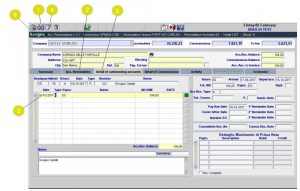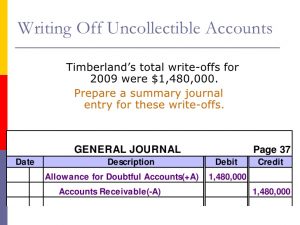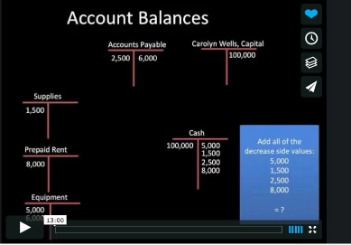Interest Expense: Formula & How to Calculate The Motley Fool
Interest expense is determined by a company’s average debt balance, i.e. the beginning and ending debt carrying amounts. The interest expense line item appears in the non-operating section of the income statement, because it is a non-core http://www.prostobook.com/KbAntonova/ component of a company’s business model. The above example demonstrates that compound interest is also concerned with the accumulated interest of former periods. Therefore, the interest that is due at the end of each year is different.
Integration with financial systems
When there is an increase in employment and the real wage rate received by workers, it leads to an increase in the productivity of labor, which in turn leads to an increase in potential GDP. For example, Japan has a relatively high cost of living and doing business, which may be a barrier to entry for some businesses. There is also some risk of natural disasters, such as earthquakes and typhoons, which can disrupt supply chains and operations. In this scenario, since firm 1 supplies only 1/4 of the market while firm 2 supplies 3/4, firm 1 has less market power than firm 2. Therefore, firm 1 has to charge a smaller mark-up over its costs than firm 2 to be able to compete. The proportion of income creation to distribution is constant in market production.
Is Interest Expense a Debit or Credit?
Suppose a company decided to raise $20 million in capital through issuances of loan with a long-term maturity near the end of 2021. Assuming there is no debt paydown during the year — i.e. the debt principal remains constant at $100 million — the annual interest equals $6 million. If you’re looking for ways to save on labor costs, sign up for a free trial (no credit card required) of Deputy. Find out how we can help you efficiently schedule your hourly staff to avoid issues of overstaffing and understaffing by clicking the button below.
What is loan interest?
The interest expense deduction is something to keep in mind as a strategic way to reduce your tax burden if you need to finance assets for your business. Be sure to consult with a financial advisor to find the most advantageous rate and repayment schedule. The period is written as 0.25 because it’s one quarter of the year in relation to the 5% annual interest rate. So, during the first quarter of 2021, the company paid $937.50 in interest expense and can list this on its income statement. Operating expenses include costs for maintenance, utilities, rent, employee payroll, etc, that have to do with the regular day-to-day activities of a business. An interest expense isn’t related to any of these core operations, which is why it’s considered a non-operating expense.
However, if your company has paid the interest in advance, this interest expense would be listed in the current assets section of your balance sheet, as a prepaid item. EBIT attempts to measure exactly how much a company earns from its core business operations. Interest expense does not include other fixed payment obligations of a company such as paying dividends on preferred stock. Also not included in interest expense is any payment made toward the principal balance on a debt.
- Your lender charges you a specific interest rate that is stated in your loan document.
- In retirement, your savings will cover many of the same expenses you had pre-retirement.
- While interest expense is an expense account in the income statement, that represents the total amount of the interest from borrowing cash.
- Heavily indebted companies may have a hard time serving their debt loads during economic downturns.
- On an income statement, non-operating expenses such as interest will appear after the calculation for operating income.
Understanding Interest Expense
- SmartAsset’s free tool matches you with up to three fiduciary financial advisors who serve your area in minutes.
- Get instant access to video lessons taught by experienced investment bankers.
- Amortization schedules outline the repayment of loans over time, specifying the principal and interest portions of each payment.
- Interest on interest works, as the term implies, by paying interest on past interest payments received as well as on the initial amount of principal invested or saved.
- Here are the best retirement plans, calculators, investment strategies, and tips you can use to ensure your retirement savings plan is on track.
Everyone’s needs will be different, and so will their approach to saving, including when they start and how much they can set aside each year. Consulting with a certified financial planner https://afn.by/news/i/116540 or other retirement expert is the best way to understand your unique needs. This rule states that retirees can withdraw up to 4% of their retirement savings in year one of retirement.
Interest Payable Leads to Cash Outflow:
Founded in 1993, The Motley Fool is a financial services company dedicated to making the world smarter, happier, and richer. When creating a commitment in a billing system, you typically have the option to assign billing recipients to that commitment. These recipients can be individuals or departments within the client organization who will receive invoices for the work done under that commitment. If you do not assign any billing recipients, you will not be able to generate invoices for that commitment. Therefore, it is important to make sure you have assigned the appropriate billing recipients for each commitment in order to ensure accurate and timely invoicing.
Consider the scalability of the accounting software to accommodate the growth of your business. As your operations expand, the software should seamlessly scale to http://www.ipag.ru/cat/kompaniy11095.html handle increased data volume and complexity. Scalability ensures that your interest expense calculations remain accurate and efficient as your business evolves.
The difference between the principal amount borrowed and the total amount repaid is interest. Simple interest is interest that is only calculated on the initial sum (the “principal”) borrowed or deposited. Generally, simple interest is set as a fixed percentage for the duration of a loan. No matter how often simple interest is calculated, it only applies to this original principal amount.







